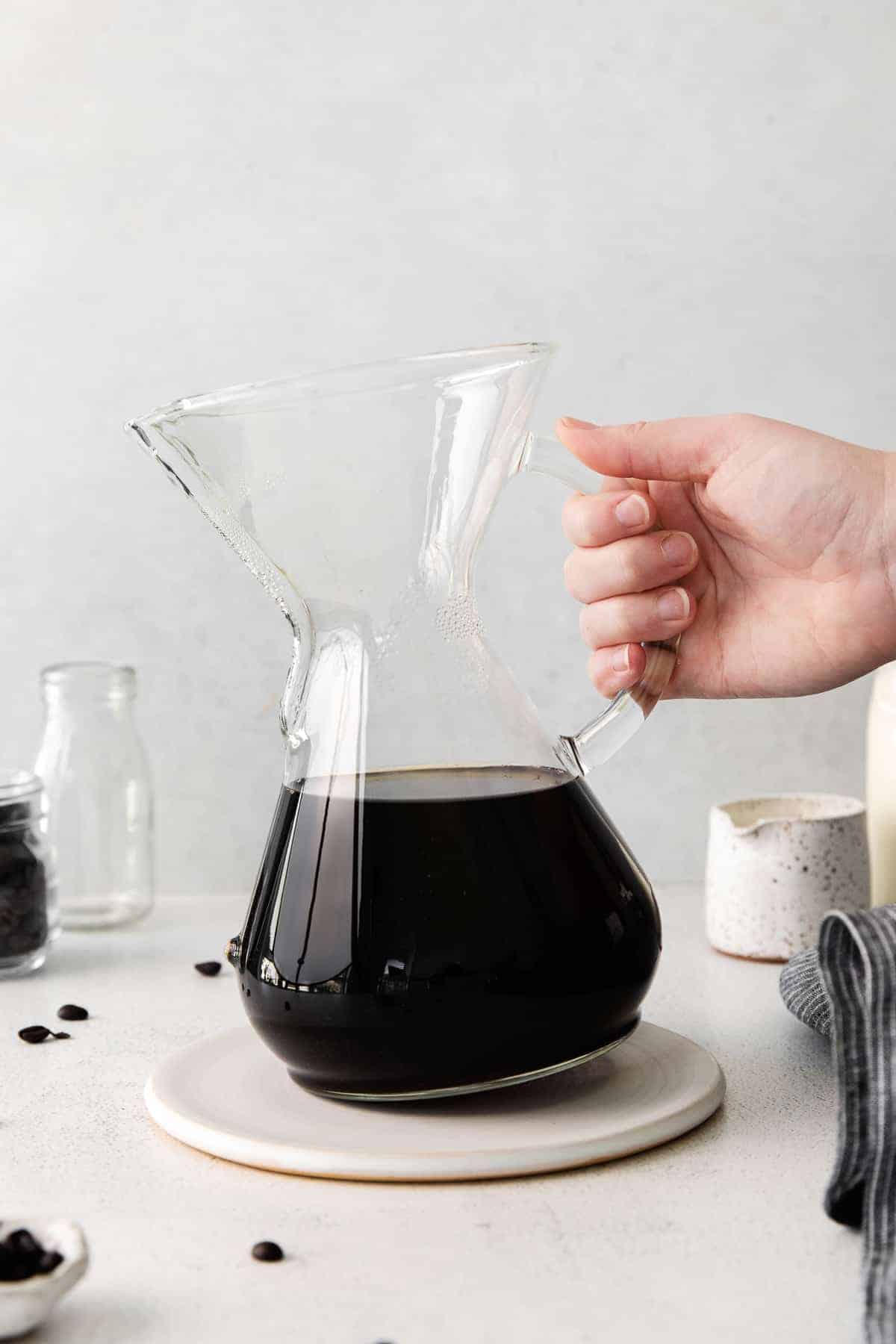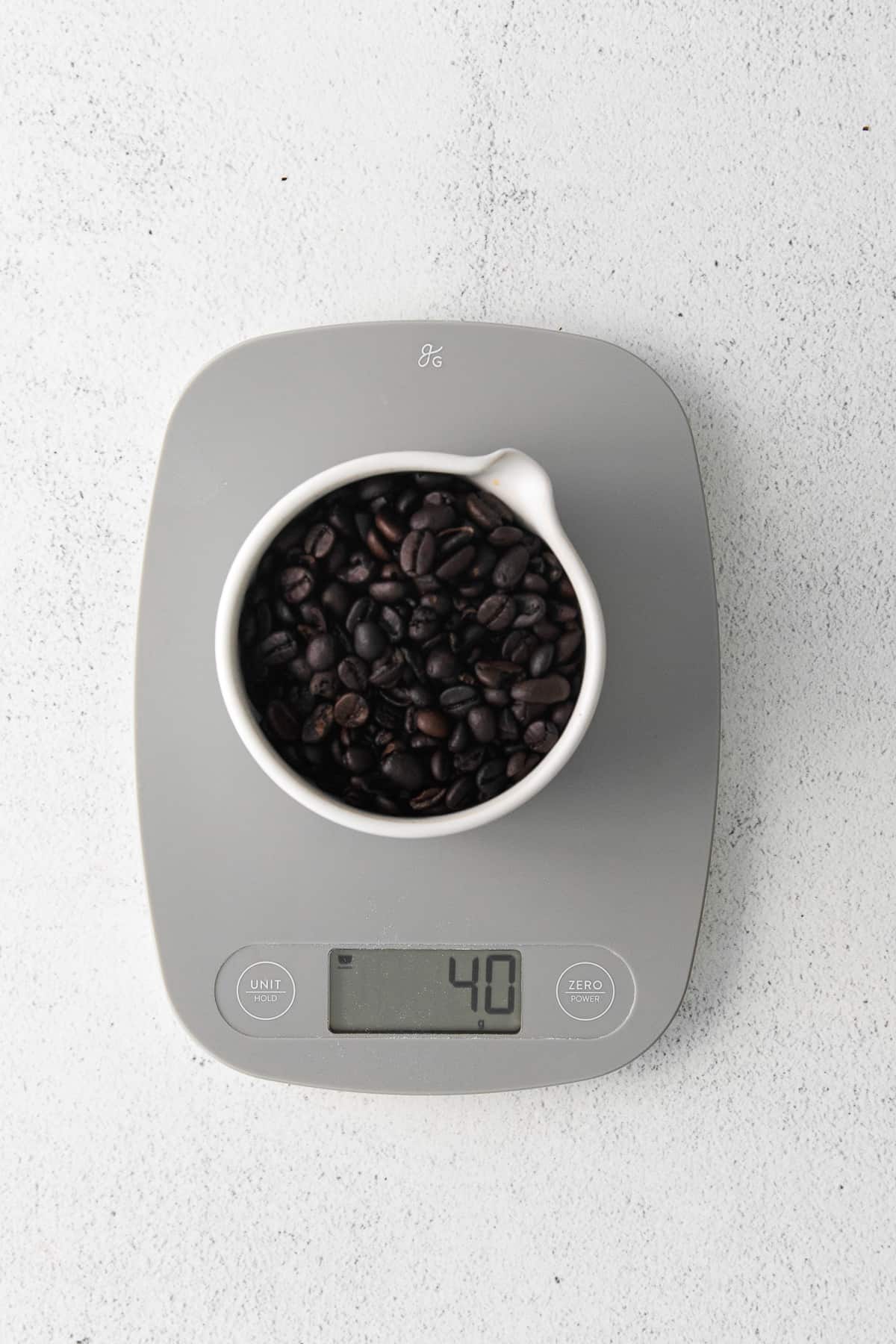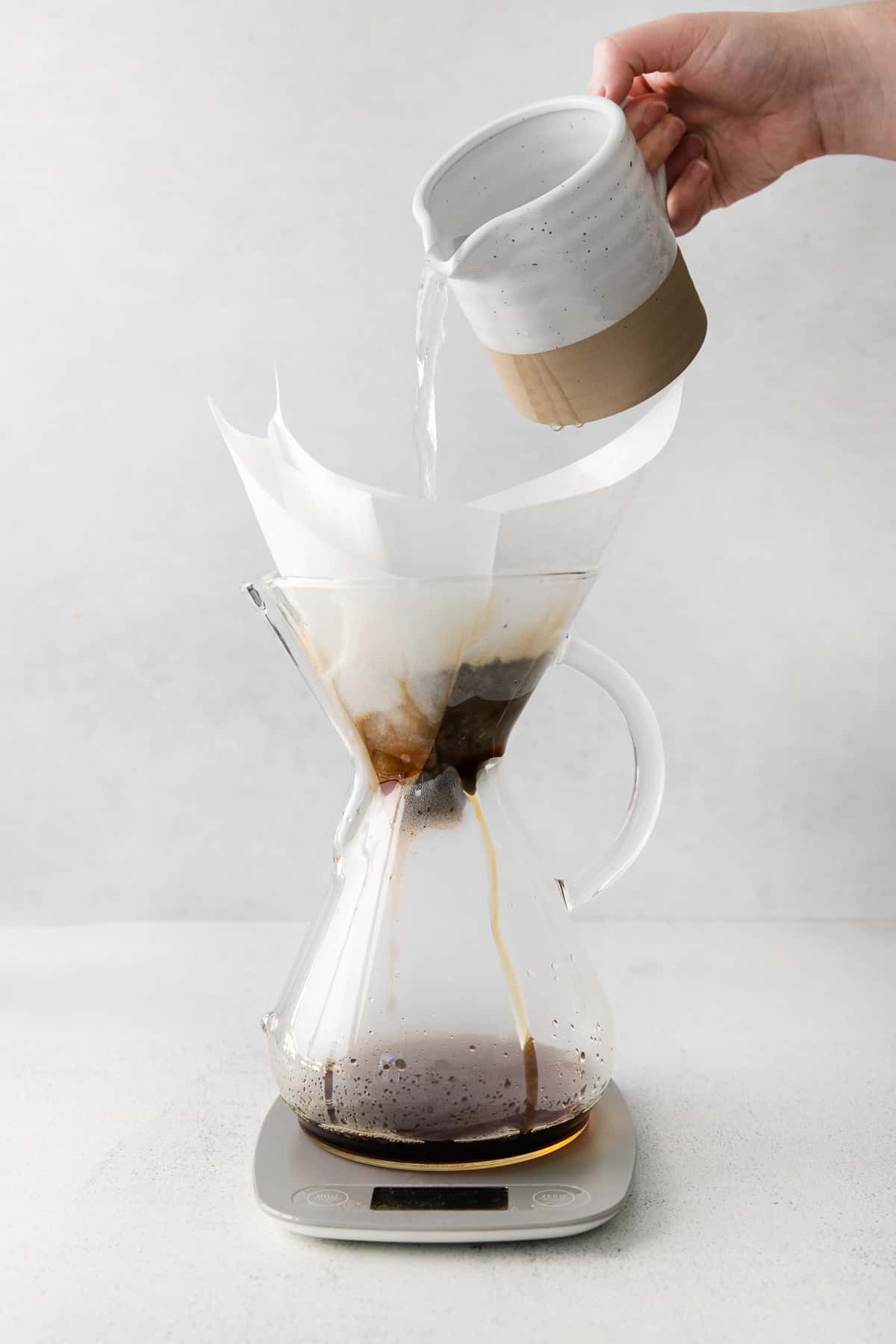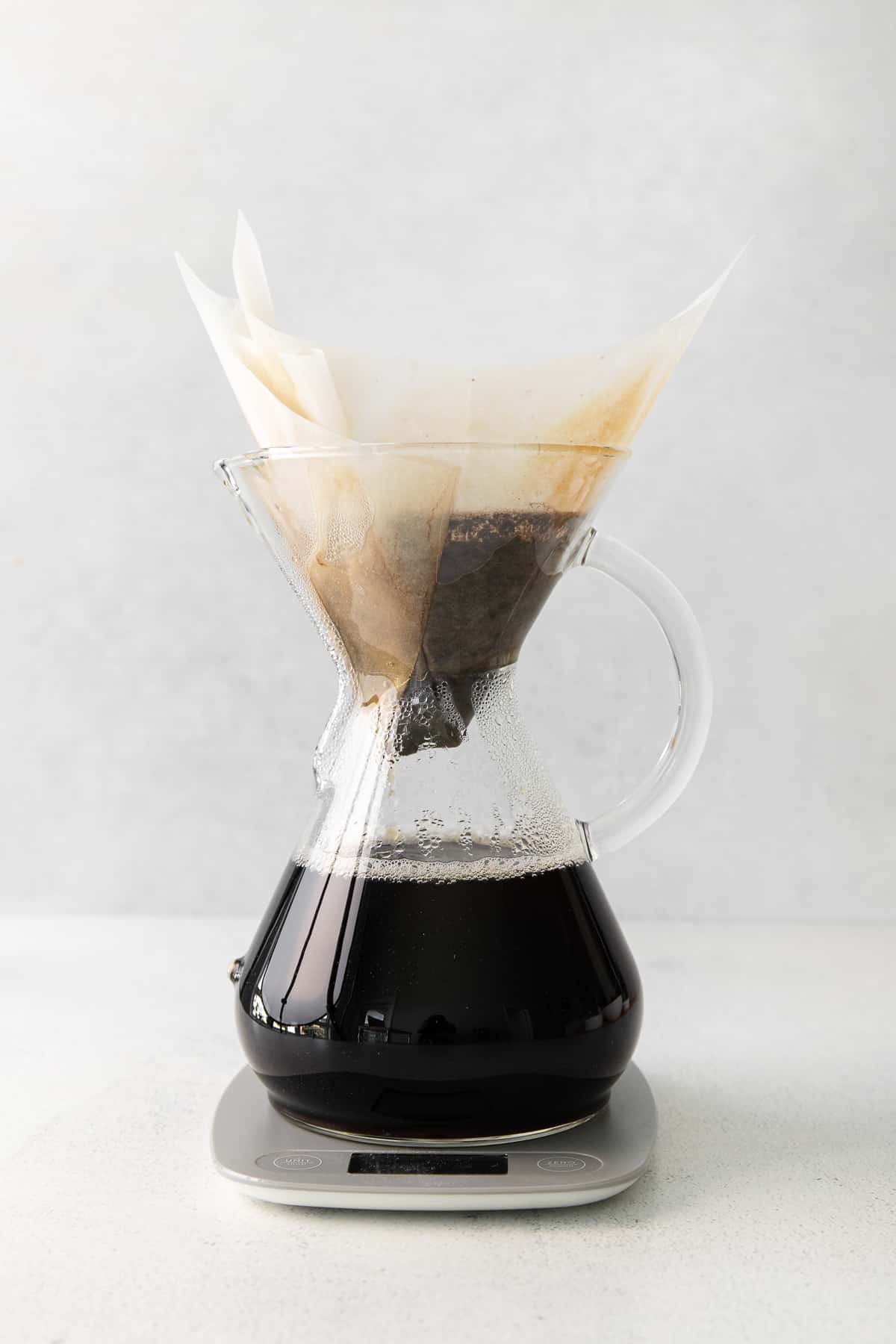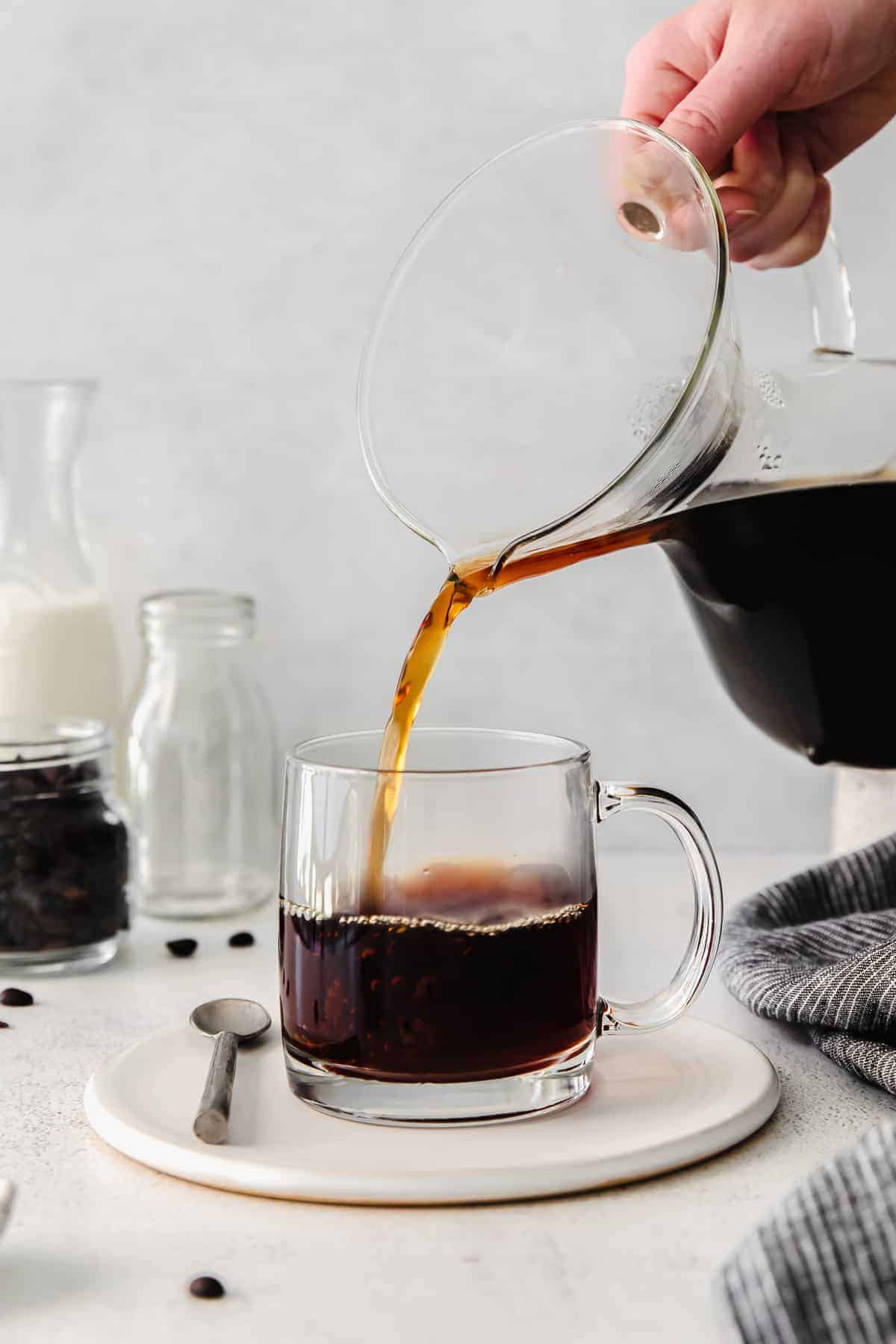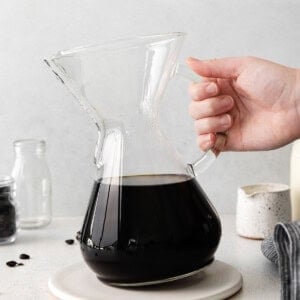Published 10/9/2021 If you’re anything like us, you like a big cup (or two) of strong coffee in the morning. There are lots of different brewing methods for coffee, but pour over is our go-to. Pour over coffee is truly the best way to get the perfect cup of coffee and today we’re excited to share our go-to pour over coffee tutorial with you.
What is pour over coffee?
Pour over coffee is a method of making coffee using coarsely ground coffee beans, a filter, and a carafe.
Tools needed for Pour Over Coffee
Pour over coffee maker: there are many different brands and sized pour over coffee makers on the market. The most popular pour over coffee maker is the Chemex, which is what we used for this tutorial. So, you can alter the strength of your coffee by changing the coffee bean to water ratio. More deets on this below. Filter: make sure you have a coffee filter handy before starting your morning cup of pour over. You can either use paper filters or a re-usable filter like the one we have. Both work and are great options. Electric kettle: the best way to get the most precise water temperature, is to use an electric kettle that allows you to set the temperature. If you don’t have this technology, you can always boil your water on the stove and let it sit for 5 minutes. We love the Fellow Electric Kettle. Coffee beans: using high-quality coffee beans is extremely important for pour over coffee. Many people prefer single-origin coffee beans. Food scale: In order to follow this pour over coffee recipe, you’ll need to use a food scale to measure the coffee beans and water. We use the Taylor Glass Top Food Scale. It’s from Target and less than $20!
Best Pour Over Coffee Brewers
When it comes to the different pour overs, we are Chemex people. It’s a tried and true coffee device that works every time. Chemex has many variations of their signature pour over coffee maker. The one used in these photos is the 8-Cup Chemex with Glass Handle.
What’s the difference between a Chemex and a pour over coffee?
A Chemex is a type of pour over coffee maker. So there really is no difference.
Other Pour Over Coffee Makers
Bodum Pour Over Coffee MakerGrosche Amsterdamn Pour Over Coffee MakerCosori Pour Over Coffee MakerHario Pour Over Coffee Maker
Best Beans for Pour Over Coffee
To get the best flavor out of your pour over, I recommend using good-quality single-origin coffee. If you have a blend of coffee beans, no fear, it will still work it just might not be as fragrant.
Our Top Picks
Below we are sharing our favorite local (Minneapolis, MN) coffee beans to use in our Chemex are:
Peace Coffee Columbia Single Origin Medium RoastDogwood Etheopia Single OriginRoots Etheopian Single Origin
Which coffee bean roast is the most bitter?
Light roast coffee is typically less bitter than dark roast. Bitterness has to do with how long the coffee bean is roasted. The longer it’s roasted, the more bitter it will be.
Quick Instructions
Remember to scroll all the way down to the recipe card for the most thorough tutorial on how to make pour over coffee.
Weak(er): 1g coffee beans to 17ml waterMedium: 1g coffee beans to 16ml waterStrong: 1g coffee beans to 15ml water (how we drink ours!)
So, if you’re like us and like strong coffee, the magic ratio is 1:15 for a perfect cup of coffee! Note: always make sure to measure the weight of the coffee beans, not coffee grounds to get the most accurate measurement.
Tips and Tricks
Coffee not strong enough?
If your coffee is not strong enough, try grinding the coffee finer or packing it slightly more with the filter.
Coffee too strong?
If your coffee is too strong, grind the coffee more coarsely or reduce the amount of coffee 16g or 17g water per gram of coffee beans.
Make sure the water isn’t too hot
Your water can be heated anywhere from 1950ºF to 205ºF. If you boil your water, make sure to let it cool for a few minutes before pouring over the coffee.
Let the coffee grounds bloom
Blooming your coffee grounds refers to pouring hot water on top of your coffee grounds in order to promote the release of Co2. As the Co2 releases, the coffee grounds expand. Fellow has a really great article on why you should let your coffee bloom.
What is better a paper filter or re-usable?
It’s all about preference. The benefit of a reusable filter is that there is no waste, but you can also buy compostable paper filters. We’ve used both and enjoy both ways.
Coffee Tutorials
How to Make Cold Brew CoffeeFrench Press CoffeeIce Brown Sugar Oatmilk Shaken EspressoMiel
